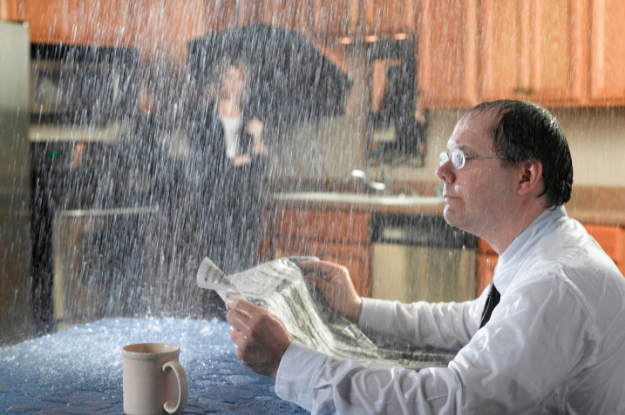It’s a gloomy afternoon, and while you’re curled up inside, burying your nose into the latest mystery novel not far away in your attic, something quite sinister is going on. A small trickle of water has been slowly seeping in through the few leaky spots in your roof, and before you know it, there are streams of water cascading down the walls.
You’ve got a real-life crisis on your hands – one that can possibly cost you thousands if not addressed correctly. So when disaster strikes due to a leaky roof, what do you need to know about insurance coverage? Read this post to gain all the information that can lead to knowing if roof leaking is covered by your insurance in order to protect yourself financially from such an unexpected incident.
What Is Home Insurance?
Home insurance coverage is a kind of protection that allows homeowners to sleep soundly, knowing their home and possessions are safe against damage. It provides financial reimbursement for losses due to fire, windstorms, hail damage, lightning strikes, water damage, and more. It also covers personal liability in case someone is injured while on your property. Home insurance coverage helps you protect the place you call home from unforeseen events that could otherwise lead to expensive repairs or worse.
Does Home Insurance Cover Leaky Roofs?
The answer to this question is: it depends. Home insurance may cover water damage from a leaky roof, but not always. It’s important to understand the specifics of your policy and what kind of coverage you have for such an issue.
Typically, if the leak is due to normal wear and tear or aging, then it is generally not covered by home insurance. However, if the leak is due to an accident or sudden event that caused the damage (like a tree falling on your house), then it may be eligible for coverage.
If you want additional protection in case of a leaking roof, many insurers offer “water backup” coverage which can help with water damages caused by sewer or drains backing up into your home. It’s always best to check with your insurance provider to make sure you have the right coverage for your needs. Learn about hail damage to roofs

What To Look For When Choosing A Roof Insurance?
1. Location: When choosing roof insurance, it is important to consider the location of your home. Different climates present different risks that you may need to be insured against. For example, if you live in an area that’s prone to hail storms, you may want to choose a policy that covers damage from hail. Additionally, if you live in an area with a lot of snow and ice accumulation, you might want to consider a policy that covers damage caused by snow and ice.
2. Type of Roof: You should also consider the type of roof you have when selecting your policy. Different materials and designs require different levels of coverage. For example, wood shingles may be more susceptible to wind damage than asphalt shingles, so you may want to look for a more comprehensive policy that covers wind damage.
3. Deductible: The deductible is the amount of money you have to pay out of pocket before your policy covers the remaining costs. When choosing a policy, make sure you can afford the deductible in case something happens. Different policies may have different deductibles, so be sure to check them before signing up for a policy.
4. Coverage: It’s important to look for a policy that covers the types of damage you are most likely to encounter. Some policies may only cover certain kinds of damage. Make sure you read the fine print to determine what kinds of damage are covered by your policy.
5. Premiums: Roof insurance premiums vary from company to company and from policy to policy. Different policies may have different deductible amounts, coverage limits, and other factors that can affect the premium. Make sure to compare different policies and companies to get the most value for your money.
6. Claims Process: When choosing roof insurance, make sure to find out how long it takes for the company to process a claim. You don’t want to be stuck waiting for days or weeks to receive your reimbursement.
With the right knowledge and preparation, dealing with a leaky roof can be a simple and straightforward process. Understanding your insurance coverage is essential to ensure that the necessary repairs will be taken care of adequately. Doing research about the types of roofs available, who to contact for repairs, and what sort of coverage is offered are all important steps to take before needing to deal with a leaky roof. Knowing this information beforehand can save time and energy in an emergency situation, so it’s worth taking the time now if you don’t know already.


